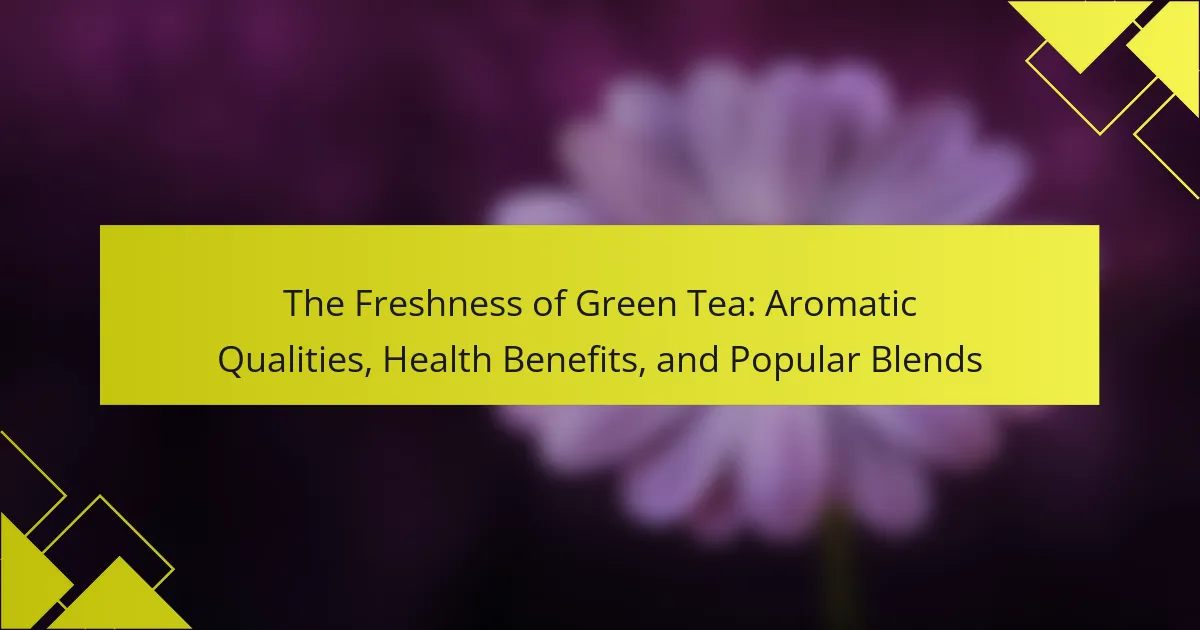
What is Oud and Why is it Significant?
Oud is a fragrant resin derived from the heartwood of the Aquilaria tree. It is significant due to its historical and cultural importance in various regions, particularly in the Middle East and Asia. Oud has been used for centuries in traditional perfumes and incense. Its rich, complex aroma is highly valued in perfumery. The production of oud is labor-intensive, making it a luxury item. The resin forms when the tree is infected by a specific mold, which is a unique natural process. Oud is also associated with spiritual and religious practices, enhancing its cultural relevance. The global demand for oud has led to conservation efforts for Aquilaria species.
How is Oud derived from its source?
Oud is derived from the heartwood of the Aquilaria tree. This tree undergoes a natural infection process. The infection prompts the tree to produce a dark, aromatic resin. This resin is what is known as Oud. Harvesting involves cutting the tree to extract the heartwood. The heartwood is then distilled to obtain the essential oil. The process can take several years for the resin to develop fully. Quality and aroma vary based on the tree’s age and the infection’s severity.
What tree species produce Oud and where are they found?
Agarwood-producing tree species, primarily Aquilaria and Gyrinops, produce Oud. Aquilaria trees are mainly found in Southeast Asia, including countries like India, Vietnam, and Thailand. Gyrinops species are also located in regions such as Malaysia and Indonesia. These trees develop Oud when infected by specific fungi, leading to the formation of aromatic resin. The resin is harvested for its value in perfumery and traditional medicine.
What processes are involved in extracting Oud?
Oud extraction involves several key processes. The primary method is the distillation of agarwood. Agarwood is the wood from Aquilaria trees that produces a fragrant resin when infected with a specific mold.
The first step is harvesting the agarwood. This requires identifying trees that have developed the resin. Next, the harvested wood is chipped into small pieces.
These chips are then subjected to steam distillation or hydro-distillation. During distillation, heat is applied to extract the essential oils. The process may take several hours to days, depending on the method used.
After distillation, the oil is separated from the water. The resulting oud oil can be further refined or blended. This process ensures the unique scent characteristics are preserved.
Research indicates that the quality of oud oil can vary significantly based on extraction methods and the age of the wood used.
What are the unique characteristics of Oud?
Oud is a unique aromatic resin derived from the Aquilaria tree. It is known for its rich, complex scent profile. Oud’s fragrance can include notes of wood, spice, and sweetness. The resin is formed in response to fungal infection, making it rare. The extraction process is labor-intensive and often requires careful harvesting. Oud is highly valued in Middle Eastern cultures for its use in perfumes and incense. Its scent strength is potent and long-lasting, often lingering for hours. This distinctiveness makes Oud a sought-after ingredient in luxury fragrances.
How does the scent profile of Oud vary?
The scent profile of Oud varies significantly based on its source and processing. Different types of Agarwood produce distinct aromas. For instance, Southeast Asian Oud tends to have a sweeter, more floral scent. In contrast, Middle Eastern Oud often presents a richer, more resinous profile. The age of the wood also influences the scent; older wood typically has a deeper, more complex aroma. Additionally, the method of extraction can alter the fragrance. Distillation may yield a purer scent, while other methods might introduce more earthiness. Variations also arise from the presence of other aromatic compounds. This complexity makes Oud one of the most sought-after fragrances in perfumery.
What physical attributes differentiate various types of Oud?
Various types of Oud differ in physical attributes such as color, density, and grain pattern. The color of Oud can range from light yellow to dark brown. This variation is influenced by the type of wood used and the age of the tree. Density varies significantly; some Oud types are lightweight while others are very dense. This density affects the oil content and scent strength. Grain patterns also differ, with some exhibiting straight lines and others showcasing intricate swirls. These physical characteristics contribute to the overall quality and aroma of the Oud.
Why is Oud culturally significant in different societies?
Oud is culturally significant in different societies due to its historical use and spiritual associations. In Middle Eastern cultures, Oud is a symbol of luxury and status. It is commonly used in religious ceremonies and traditional practices. The fragrance is believed to purify the air and enhance spiritual experiences. In Southeast Asia, Oud plays a vital role in cultural rituals and is often given as a gift. The wood’s rarity and cost contribute to its cultural value. In many societies, Oud is linked to identity and heritage. Its scent evokes nostalgia and connection to traditions. The global demand for Oud has led to its incorporation into various cultural practices worldwide.
How is Oud used in traditional rituals and ceremonies?
Oud is used in traditional rituals and ceremonies primarily as a form of incense. It is burned to create a fragrant atmosphere during spiritual practices. In many cultures, Oud symbolizes purity and is believed to purify spaces. It is commonly used in weddings, funerals, and religious gatherings. The aromatic smoke is thought to invite blessings and ward off negative energies. Historical texts indicate that Oud has been utilized in rituals for centuries, especially in Middle Eastern cultures. Its significance is further reinforced by its mention in ancient manuscripts and religious texts. Oud’s rich scent is also associated with meditation and reflection, enhancing spiritual experiences.
What role does Oud play in historical trade and economy?
Oud has played a significant role in historical trade and economy as a highly valued commodity. It has been traded for centuries, particularly in Middle Eastern markets. The demand for Oud has driven extensive trade routes across Asia and the Arabian Peninsula. Historical records indicate that Oud was used as currency in some regions. Its rarity and the labor-intensive process of extraction contributed to its high market value. Oud’s economic importance was also tied to its use in religious and cultural practices, enhancing its desirability. The trade of Oud has influenced local economies and contributed to the wealth of various regions. Today, Oud remains a crucial part of the luxury fragrance market, sustaining its economic significance.

What factors influence the scent strength of Oud?
The scent strength of Oud is influenced by several key factors. The quality of the wood used plays a significant role. Higher quality Agarwood produces a more potent scent. The age of the wood also affects the strength; older wood tends to have a richer aroma.
The extraction method impacts scent strength as well. Distillation methods can vary, leading to differences in potency. Environmental factors during the growth of the tree contribute to the scent profile. Soil quality, climate, and humidity can enhance or diminish the fragrance.
Furthermore, the concentration of essential oils in the final product is crucial. Higher concentrations yield stronger scents. Lastly, the presence of additives or blending with other fragrances can alter the perceived strength of Oud.
How does the age of Oud affect its fragrance intensity?
The age of Oud significantly affects its fragrance intensity. As Oud ages, its scent becomes richer and more complex. Freshly harvested Oud tends to have a lighter aroma. Over time, the aging process enhances the depth of its notes. This is due to the natural chemical changes occurring within the wood. Older Oud often exhibits a more profound and lasting scent profile. Historical practices show that aged Oud is highly valued in perfumery. Many connoisseurs prefer Oud that has matured for several years for its superior fragrance.
What impact do storage conditions have on Oud’s scent strength?
Storage conditions significantly impact Oud’s scent strength. Proper storage preserves the integrity of Oud’s aromatic compounds. Exposure to heat, light, and humidity can degrade these compounds. High temperatures can lead to the evaporation of volatile oils. Light can cause oxidation, altering the scent profile. Humidity can encourage mold growth, negatively affecting the fragrance. Ideally, Oud should be stored in a cool, dark, and dry environment. This ensures the scent remains potent and true to its original profile. Studies show that essential oils, including Oud, maintain their quality best under stable conditions.
How do different extraction methods alter the scent profile?
Different extraction methods significantly alter the scent profile of oud. Steam distillation typically produces a lighter, more floral scent. This method captures volatile compounds effectively, resulting in a fresher aroma. Conversely, solvent extraction yields a richer, more complex scent. This method preserves heavier, non-volatile compounds, contributing to deeper, more intense aromas. CO2 extraction offers a balanced profile, retaining both volatile and non-volatile components. Each method influences the concentration and variety of aromatic compounds, ultimately shaping the overall scent experience.
What are the common uses of Oud in modern applications?
Oud is commonly used in modern applications for fragrance, incense, and traditional medicine. In the perfume industry, Oud is valued for its rich, complex scent. It often serves as a base note in high-end fragrances. Incense made from Oud is used in religious and cultural ceremonies. Additionally, Oud oil is utilized in aromatherapy for its calming properties. Some cultures also use Oud in skincare products for its potential benefits. The demand for Oud has grown significantly, with the global market projected to reach over $1 billion by 2025. This highlights its increasing popularity and diverse applications.
How is Oud utilized in the perfume industry?
Oud is utilized in the perfume industry as a key ingredient for creating rich, complex fragrances. It is prized for its deep, woody aroma that adds depth to perfume compositions. Perfume houses often blend oud with other notes to enhance scent profiles. This ingredient is frequently used in niche and luxury perfumes due to its high cost and rarity. The extraction process involves distilling the resin from agarwood trees, which is labor-intensive. Oud’s historical significance in Middle Eastern culture further elevates its desirability in perfumery. Many consumers associate oud with opulence and sophistication. Its unique scent can linger for hours, making it a popular choice for long-lasting fragrances.
What therapeutic benefits are associated with Oud in aromatherapy?
Oud offers several therapeutic benefits in aromatherapy. It is known for its calming effects, promoting relaxation and reducing stress. Oud can enhance mood and alleviate anxiety symptoms. Its rich, woody scent is also believed to aid in meditation practices. Additionally, Oud has anti-inflammatory properties, which can support overall well-being. Research indicates that Oud essential oil may improve sleep quality. This is attributed to its sedative effects on the nervous system. The scent of Oud can also enhance cognitive function and focus. Overall, Oud is valued for its holistic benefits in promoting mental and emotional health.

How can one appreciate and select Oud effectively?
To appreciate and select Oud effectively, one should focus on its quality, aroma, and origin. Quality is determined by the type of wood and the distillation process. High-quality Oud is derived from Aquilaria trees, specifically from regions like Southeast Asia. Aroma varies significantly; it can be woody, sweet, or spicy. Evaluating the scent involves smelling it directly or through a tester.
Origin plays a crucial role in Oud’s characteristics. For instance, Oud from India is often richer, while that from Vietnam is more floral. Buyers should also consider the form of Oud, such as oil, chips, or incense. Each form has distinct uses and scent profiles.
Engaging with knowledgeable sellers can enhance the selection process. They can provide insights into the Oud’s background and usage. Sampling different varieties before purchasing is advisable. This allows one to find the preferred scent and quality.
What should consumers look for when choosing Oud products?
Consumers should look for quality, source, and scent profile when choosing Oud products. Quality is often determined by the purity and concentration of the Oud oil. Authentic Oud is derived from the Aquilaria tree, specifically from regions like Southeast Asia. The source affects both the aroma and price. Scent profile should match personal preferences, as Oud can vary from woody to sweet. Additionally, consumers should check for certifications or lab results confirming the product’s authenticity. This ensures that the Oud is genuine and not a synthetic alternative.
How can one identify high-quality Oud from lower-grade options?
High-quality Oud can be identified by its rich aroma, density, and color. Authentic Oud has a complex scent profile, often described as woody, sweet, and earthy. In contrast, lower-grade Oud tends to have a flat or synthetic smell. The density of high-quality Oud is greater, making it heavier and more resinous. Additionally, premium Oud typically features a dark brown to black color, indicating a higher concentration of essential oils. The source of the wood also matters; Oud from Aquilaria trees aged over 20 years is often superior. Lastly, reputable suppliers provide certificates of authenticity, confirming the quality and origin of the Oud.
What are some tips for using Oud in daily life?
Oud can be used in daily life by applying it in various forms such as oils, incense, or sprays. When using Oud oil, apply a small amount to pulse points like wrists and neck for a lasting fragrance. For incense, burn Oud chips in a traditional burner to create a warm, inviting atmosphere. Oud sprays can be used for a quick refresh throughout the day. It is also effective to layer Oud with other scents for a personalized fragrance experience. Using Oud in moderation is key, as its strong aroma can be overwhelming. Additionally, incorporating Oud into rituals or meditation can enhance the experience due to its calming properties.
Oud is a fragrant resin sourced from the heartwood of the Aquilaria tree, recognized for its historical and cultural significance, particularly in the Middle East and Asia. The article explores the intricate processes involved in the extraction of Oud, the unique characteristics that differentiate various types, and the factors influencing its scent strength, including age and extraction methods. Additionally, it highlights Oud’s role in traditional rituals, its economic impact, and its therapeutic applications in modern contexts. The comprehensive overview aims to enhance understanding of Oud’s value, usage, and appreciation in various cultures.



